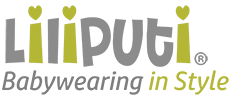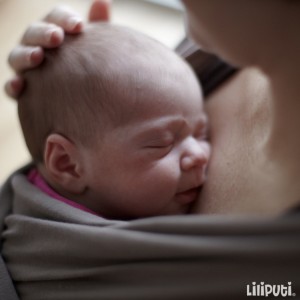“Oh God, my baby has a fever!” “Her little body is cold, even though I dressed her warm.” “He is ill. He can bearly breath with that cold.” “She is frightened, her heart is beating rapidly, she is crying desperately and she is gasping for breath.” “His ear hurts very badly.”
Every mother runs into these situations from time to time. She feels that there must be a solution apart form antifebrile suppository, nasal aspirator, nose-drops, but what can it be?
Hospital protocol requires monitoring newborns for about 2 hours after birth. Babies are separated from their mothers, they are placed into an incubator, examined by the doctor, and they are exposed to further, quite unnecessary procedures.
When giving birth, essential functions are awakened in the maternal body, which are meant to support the well-being of the infant and enhance the mother’s regeneration.
The impressions registered in the mother and her child during the first period following the birth are absolutely vital.
 “If babies are put onto their mother’s chest,” says Judit Sződy, our expert psychologist, IBCLC lactation consultant, journalist, “at first, they settle and stop crying – provided they had cried at all –, then they start collecting information.”
“If babies are put onto their mother’s chest,” says Judit Sződy, our expert psychologist, IBCLC lactation consultant, journalist, “at first, they settle and stop crying – provided they had cried at all –, then they start collecting information.”
How?
First, they lift their hand close to their face. If they are not bathed yet, newborns’ little hands smell of amniotic fluid. They take a nose test, and start crawling towards their mother’s breasts. The glands around the nipples give off a substance that smells like amniotic fluid, so babies are lead by the nose at first. After that, they notice the warm outline of the areola. When they arrive tho their destination, they taste the nipple, usually latch on it perfectly and start sucking.
This encounter is essential from a physiological point of view.
Newborns’ blood sugar level and oxygen supply normalizes, their body temperature do not decrease, since they are warmed up by their mother’s body from the front, and the typical brown babyfat keeps them warm on their back. Their stress hormone level increases. If newborns are handed over to their mother, preferably naked, and mother and child are tucked in together, they can easily accommodate to the new environment. If infants after birth are bathed and taken away from their mother, these figures look worse, consequently, the incubator and the blood sugar test may be truly necessary.
The so called kangaroo care is practiced worldwide on pre-term, weak or ill infants with carriers specifically developed for this purpose.
Kangaroo care was invented in Columbia, in an emergency situation. There was a shortage of incubators in the hospitals, yet the medical attendance of preterm infants had to be solved. Babies were placed naked onto the bare chest of their mothers, and secured with a wrap created for this purpose. This way they received the necessary attendance: oxygen, infusion, monitoring. As it turned out, babies cared for skin-to-skin with their mother develop and grow faster, can be taken home earlier than newborns in incubators. Besides, the method has proven successful in improving survival rates and increasing breast feeding.
To what extent does close bodily contact play an important part in successful breast feeding and how does it motivate the mother to carry her baby?
Breast milk changes according to the baby’s age, which is “measured” by women’s body from the moment of conception. Breasts produce entirely different milk for pre-term infants than full term newborns. For three days after delivery, colostrum is generated, later transitional and finally mature milk is produced. Breast massage increases the fat content of human milk, and induces milk ejection reflex. Babywearing can have the same effect. Carried babies suck more often, and it affects the amount of milk.
Kangaroo care is not just a delusion of grandeur…
In the light of the above mentioned results, kangaroo method was introduced in several institutions, and finally WHO classified it as recommended treatment. In Hungary, kangaroo care is practiced in the city hospital of Debrecen and the Premature Baby and Infant Department of Central Army Hospital. Both clinics have shown distinguished achievements.
You should be aware that as a result of civil initiative, mothers and communities committed to babywearing have joined to a movement during the past two years. It included giving away stretchy wraps to maternity wards, promoting the benefits of kangaroo care both for the hospital employees and the mothers.
It is also worth keeping in mind that using your quality as a “supersonic incubator”, your touch and closeness in difficult moments have a soothing and reassuring effect on older babies or bigger children as well. The way breast milk responds to your baby’s needs, your body is also aware of how to bring down fever, warm up chilled little feet, sooth pain and sadness.
This magnificent instrument is created for this sole purpose, nothing could be more perfect for you and your baby.


Leave Comment
You must be logged in to post a comment.